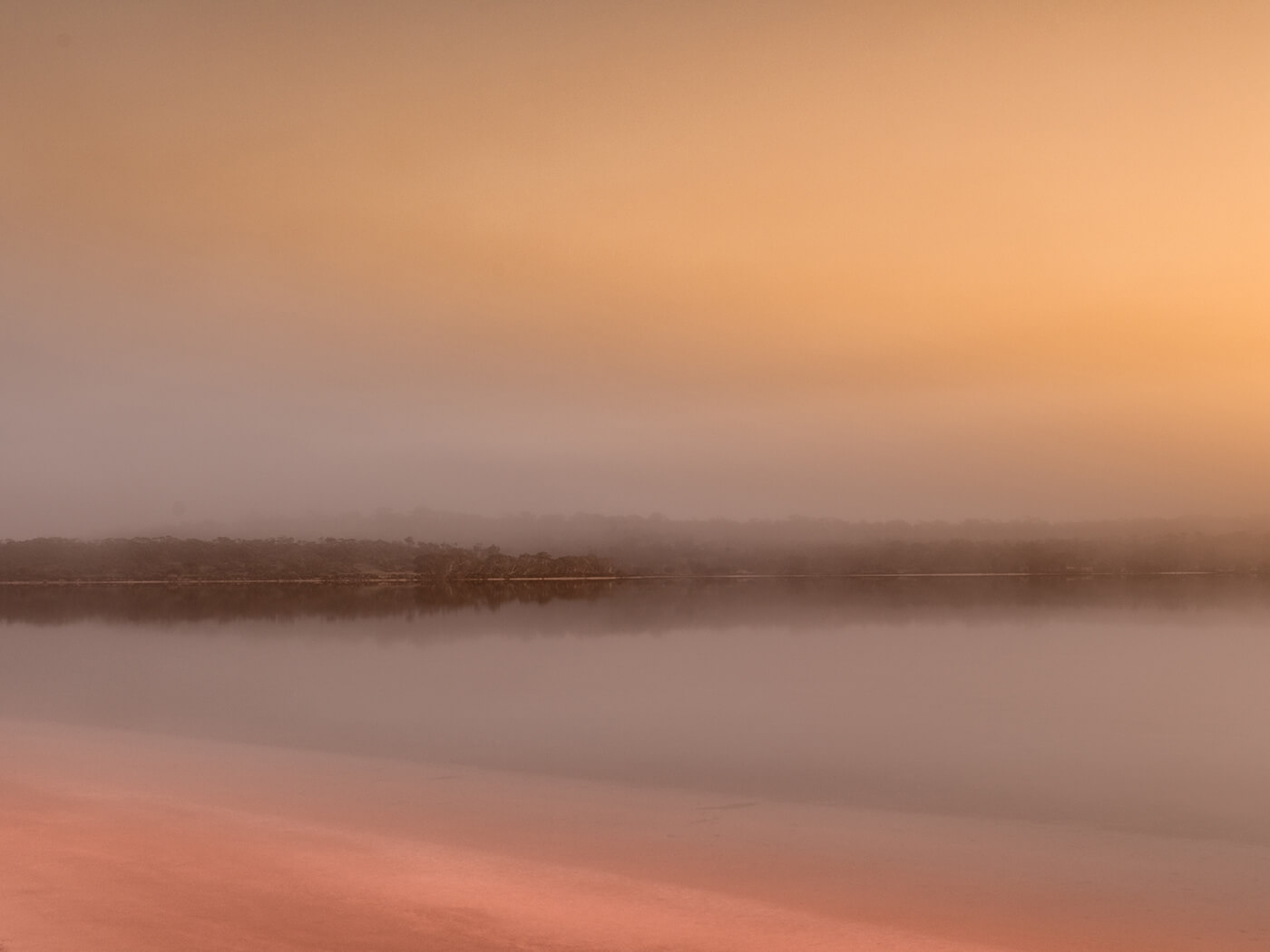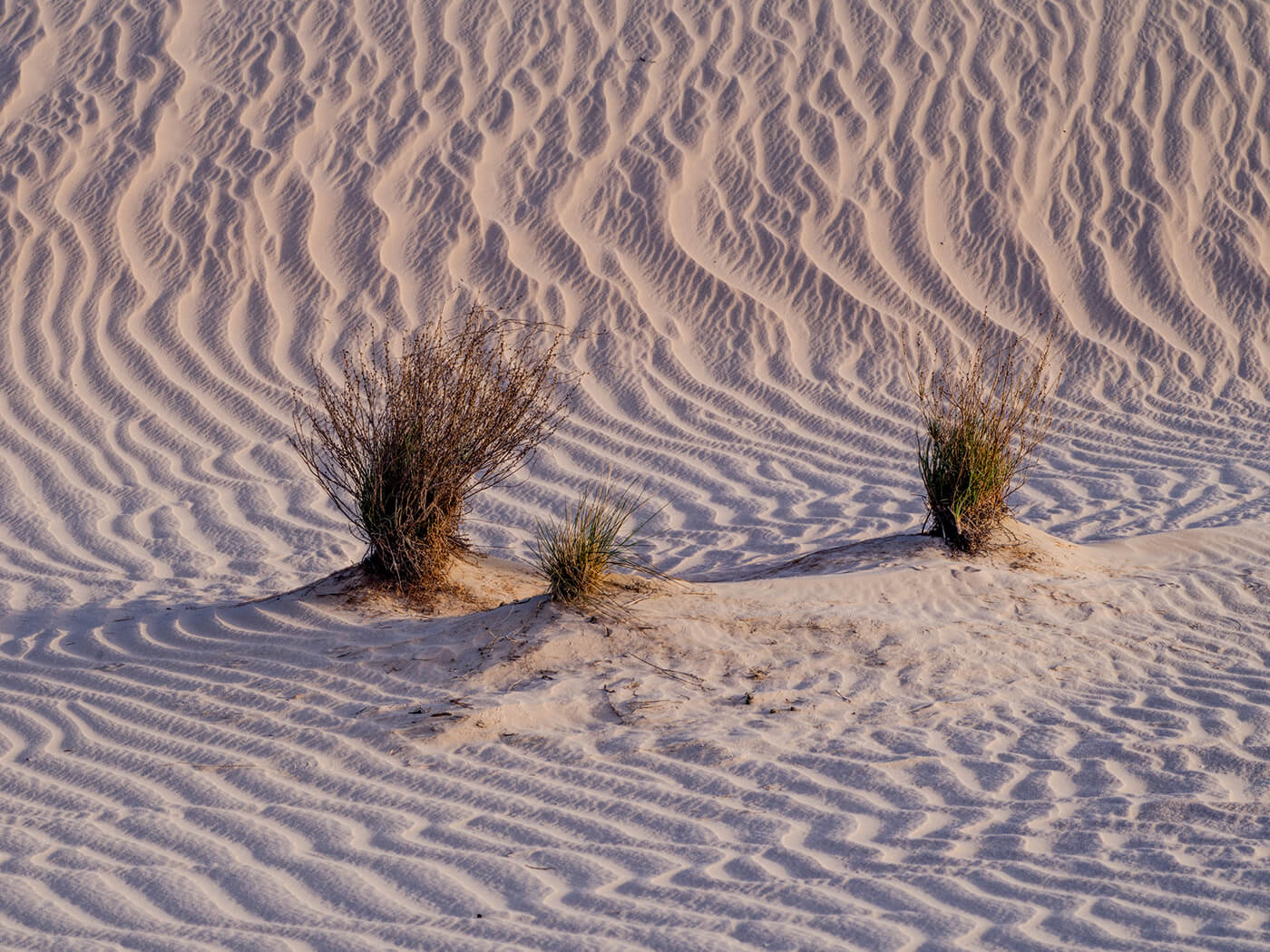INTERVIEW
A Deep-Rooted Connection
WITH RUSSELL CURR
AN INTERVIEW WITH RUSSELL CURR
“It’s the stillness, the big sky, the tranquillity, the stars at night free from light pollution, the feeling that comes from knowing people have been living here for over 40,000 years.”
Russell Curr won 1st Prize in our recent Planet Earth competition with an image judge Ami Vitale praised for its strong symbolic quality, speaking “to the innate ability of life to adapt and endure, even in the face of seemingly insurmountable challenges”.
In this long-form interview we put some questions to Russell, asking him about the image, his passion for the environment, and the challenges of photographing on such harsh terrain…
Dear Russell, congratulations on winning our Planet Earth competition. What did you make of the judges’ comments?
Winning this prize and reading the judges’ comments has inspired me. I have had a difficult year with health issues and my photographic work has suffered. But this affirmation of my efforts has lifted me. The comments fitted well with my emotions when i finally saw the shot on my computer screen. The impact European civilisation has had on this landscape is horrendous. Sheep grazing was removed from this national park years ago but feral goats are still a major hazard; so plants still struggle and this tree in the shot epitomises for me the constant battle that the landscape wages just to survive. But it is also one of tremendous strength and resilience. The tree has survived for many years despite all the difficulties it has faced. The landscape is improving in the protected areas and given a chance it does recover, life recovers.
Can you tell us a little more about the image itself and the circumstances behind it? And is it from a larger series of work?
The image was taken on the eastern side of lake Mungo in western New South Wales, a hugely significant archaeological site in Australia. Ceremonial burial remains have been found here that date back 45,000 years, and the first nations people of Australia have been continuously living in this area for about 50,000 years, perhaps longer. Footprints of a hunting party, estimated to be 25,000 years old have been found in the ancient mud layers within the lunette not too far from this tree.
The photo was taken just as the sun rose and started to burn off the morning fog; the light was sublime. I had been trying to capture as much of this light as possible as I knew it would not last long. I had walked about 2kms from my camp, starting a little before dawn, with the mist so dense and quite cold, that at first my lens kept fogging up. Initially I had been focusing on the dunes in the fog and the pat-terns formed by the early light on the sand ridges. Dunes are always changing, the west wind that created them is constantly shifting and altering the shape of the land. I knew of this tree and made my way toward it hoping the light would enable an effective composition. I was pleased with the result although it was not fully realised until I saw it on my computer upon my return home; I was too busy collecting more shots to focus on the last shot. The final edit of this image is as seen here. It captures the mixed emotions I have in regard to this area and of our vulnerable desert lands: the strength and resilience of the land and the flora but also recognising the difficult path ahead as we try to combat climate change.
My first visit to Mungo did not inspire me and I left me with little by way of decent photographs. My second visit has led to many more visits as I gradually began to ‘see’ this landscape. And since then I have been developing a body of work to explore, or highlight what I can only describe as a spiritual connection with this country. My ancestors came from Scotland and England and yet I feel a deep connection with this land. I hope my work can convey this emotional connection that I feel, but can’t explain. Is it the stillness, the big sky, the tranquillity, the stars at night free from light pollution, or the feeling that comes from knowing people have been living here for over 40,000 years?
I need to visit a place several times at least to absorb the atmosphere and ‘find’ suitable compositions. I don’t ‘see’ the land on a single visit. Hence I return to Mungo to get another shot, another angle or view. In fact this is true for all my favourite landscapes – I need to return several times to obtain the ‘right’ compositions. Some of my favourite coastal dunes are west of Ceduna, which is about a 3 day drive away, so visits become a major undertaking. I am developing a growing portfolio of Mungo work spread over the years, but I am not finished yet.
The jury noted how the image speaks to the resilience of life to survive in the face of adversity, and it has been picked up by various conservationist outlets including Resurgence & Ecologist magazine. Is conservation a conscious aspect of your work?
Yes, conservation and the highlighting the damage we have done to this continent in such a short space of time (European people have only been here less than 250 years) is a conscious feature of much of my photographic work. Lake Mungo National Park has undergone enormous change since the last ice age and also since the arrival of European settlers and their sheep. The Willandra Lakes were once part of an extensive lake system fed by the Baaka/Darling river. The overflow fed into these lakes and kept them full. As the last ice age receded the lakes dried out as Australia’s climate changed. It’s estimated that the lake was once 8m deep but it dried up about 17,000 yrs ago and is now salt bush and sand. The local people adapted to the changed environment; but can we adapt as our climate changes? In less than 200 years grazing has severely damaged this area. Travelling in much of the Australian outback one sees the staggering amount of damage to the environment caused by the grazing of introduced animal. Cattle, sheep, rabbits, wild goats, wild pigs, camels, feral cats and introduced grasses and weeds are severely impacting this fragile eco-system. But the land is very resilient; given a chance the native vegetation returns and thrives. Sheep were removed years ago from Mungo National Park and the land is recovering. It’s apparent when you leave the park and enter the areas still being grazed.
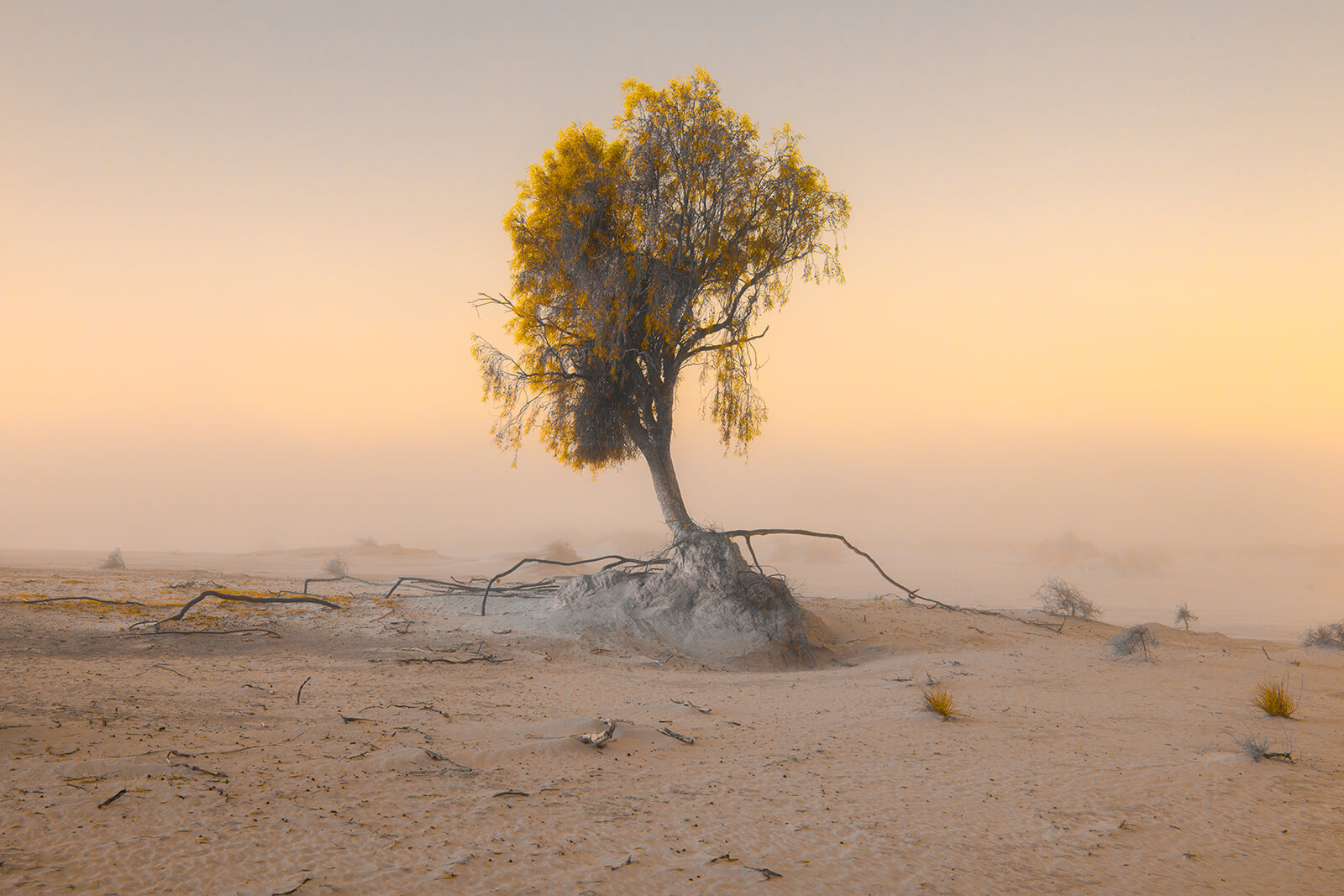
RUSSELL’S WINNING PLANET EARTH IMAGE
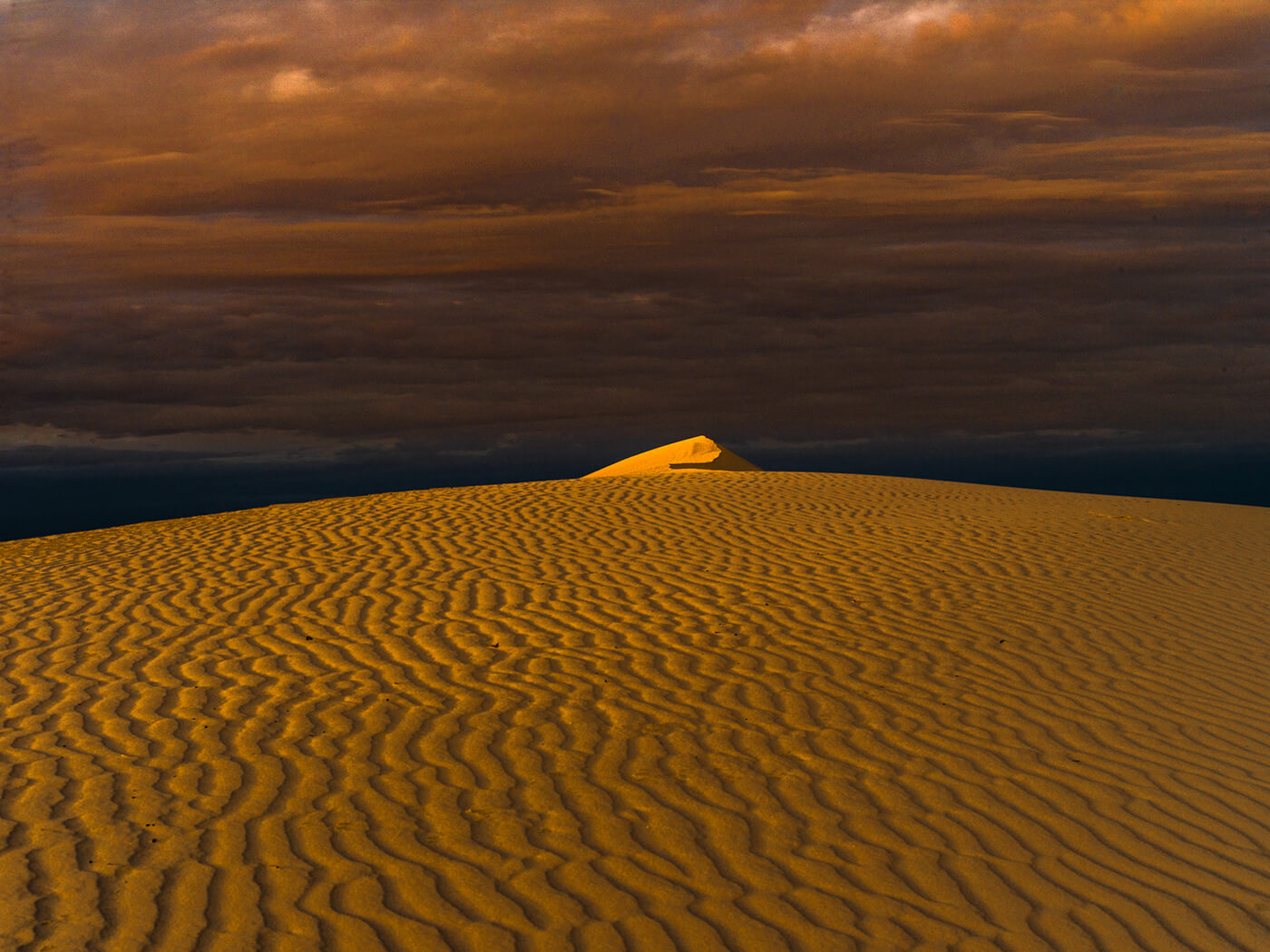


Desertscapes appear to be a recurring theme for you. What is it about this environment that compels you to capture it?
My introduction to the outback desert of Australia was actually through working for mining companies near Lake Lefroy (Western Australia) and Lake Frome (South Australia) when I was a teenager. A few years later my partner and I hitch hiked through from Darwin to Adelaide (when the road was dirt/dust for about 3,000kms!). These trips left a lasting impression on me but life intervened and it was many years before I managed to once again explore these areas. I find the remoteness, the tranquillity, but most of all the open space, the big sky that seems to go on forever, like a magnet that draws me back again, and again. In the Lake Mungo region sitting amongst stands of sandhill wattle, with the breeze whispering through the foliage it’s easy to image the lives that lived here all those thousands of years ago. It’s a strange feeling, a knowledge that people have been on this land for thousands of years, and their artefacts are still commonly found: stone tools, remains of ancient fire places, mussel shells collected from the lake. In many areas of Australia ancient rock carvings are not uncommon which speak to the people, the cultures that thrived before white invasion. It’s the feeling induced by this landscape that draws me back.
Despite the limited colour palette, the limited range of geological formations, the land provides the keen photographer with an abundance of compositional options that become more apparent the more familiar with the landscape one becomes.
And how do you approach working in such a difficult environment – both in its climate and in its challenges with respect to photography? It feels like finding the ‘right’ composition must be challenging in such a, one could argue, homogeneous landscape?
There are the practical problems of wind, sand and dust that can damage sensitive equipment. I usually need to clean not only my lenses but also my camera sensor after each trip. Winter weather is very pleasant but summer can be harsh – blast furnace like north winds and extreme heat. But each season has its attractions with late winter/early spring alive with flowers. Compositions I find ‘develop’. My first visit here was very disappointing – I had nothing to show for the 3 days I spent here. But I have now been back many times and constantly find new aspects of the land to photograph. It is a challenging environment and at first sight it does appear limited from a photographic perspective. But greater expo-sure to the land reveals much more. The light can be magical, especially pre-dawn and just around sun-set. I have had many trips to other desert areas, dunes and to vast salt lakes, of which we have many in Australia. It is the apparent simplicity of the landscape I find so attractive. At one end of the spectrum of my work I seek out minimalist landscapes, like dunes, deserts while at the other end I photograph the complexity of the Australian forests, which are often tall trees spearing skyward from a jumble of fallen logs and dense smaller scrub – quite the opposite of a minimalist landscape. #Australian ‘bush’ does not conform to the neatness of a European forest – it’s why kangaroos hop. They hop over the jumble of bush debris.
From a compositional perspective I find dunes to be an attractive subject. They are constantly changing, both in texture, shape and colour. Usually they are windy places with footprints removed overnight and dunes re-structured or moved over several weeks. Rain will change the texture of the sand, and coastal dunes provide a different colour palette to the inland dunes and I suspect have a higher salt con-tent that influences their colour. I look for unique elements within the landscape that may only be temporary, such as wind sculptured hollows or wind patterns on the sand that are highlighted at dawn and dusk. Or it maybe the plants that eke out an existence in a sea of sand, their roots so vital in stabilising the shifting dunes or the mud plains. With the Lake Mungo lunette the ancient mud layers, sculpted by wind and rain over millennia provide another compositional dimension.
Tell us about your route into photography. Have you had mentors, or a formal education? And what role does it play in your life now?
In my ’20’s I had a dark room (this was long before digital), but then I moved house, lost the dark room, lost my camera! Later I took lots of snaps of climbing and skiing trips but nothing like ‘serious’ photography. My first digital camera was about 22 years ago – it was expensive with terrible colour. After working through a Pentax film camera, a Canon5D and Sony A7R I eventually purchased a medium format Pentax 645Z in 2015. I have no formal training in photography (I studied Economics!) although the great Australian photographer John Cato was a family friend so perhaps I ‘absorbed’ some of his influence. Interestingly he was photographing desert landscapes back in the 1960’s. # He would drive out into remote areas in his little Morris Major – no 4×4 ute in his day! Photography is now my creative passion, my creative outlet; it gives me such joy to take a ‘good’ shot, even if no-one else sees it. #If I can present it for others to see and it is appreciated I am pleased even further. If it can convey a deeper meaning, of fragility and impermanence, resilience and strength, even better.

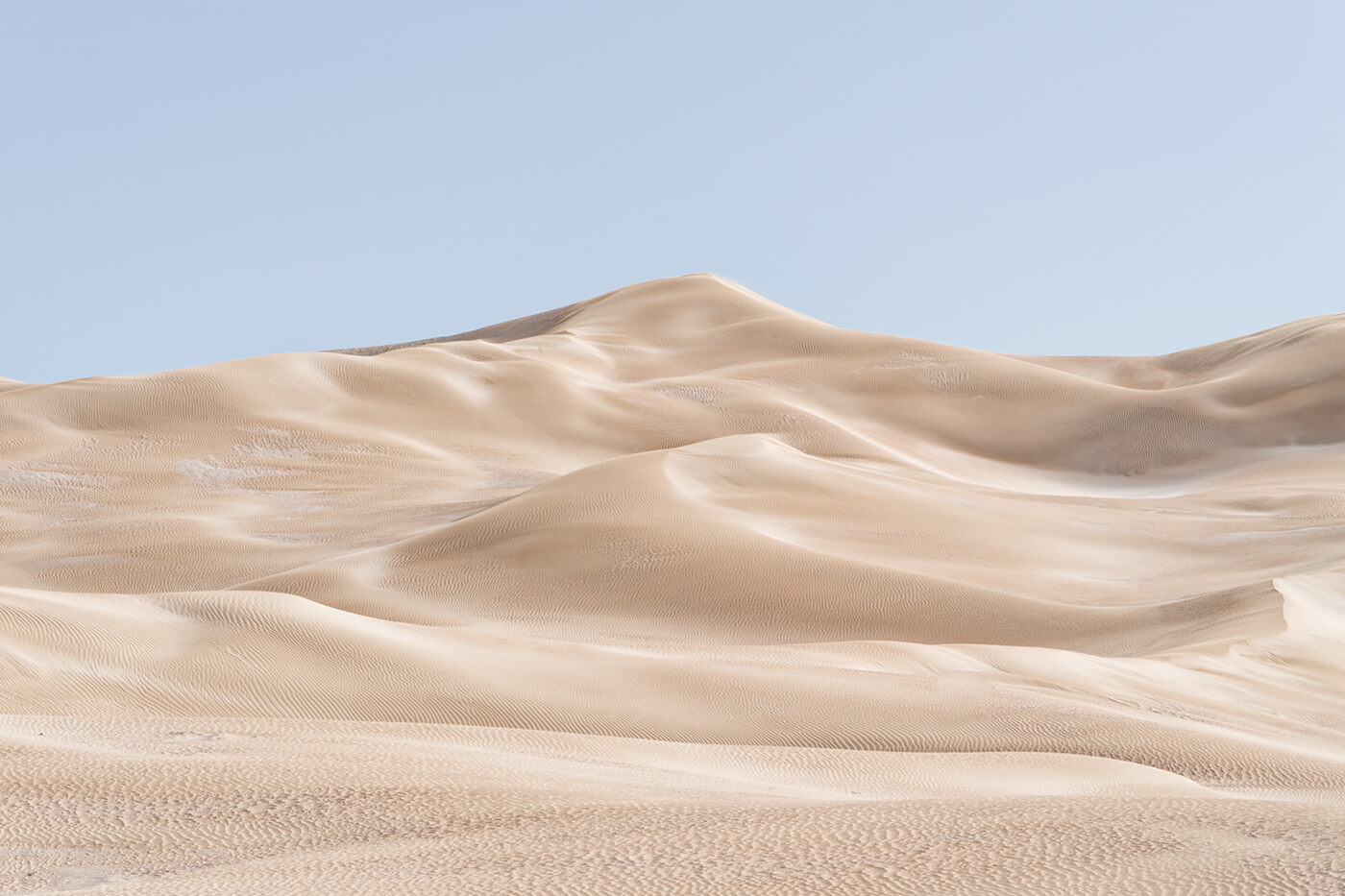



Are there particular photographers or other types of artist whose work inspires you?
I do remember seeing the black and white desert prints of John Cato when I was a young teenager. I wondered at the time why he drove to such remote areas and took such photos; it took a while, but now I understand! The photographic landscapes of Tony Hewitt and Murray Fredericks inspire me to work harder and do better while the creative imagination of Tamara Dean amazes me. And I find the paintings of Rembrandt, Turner and the early Australian painter Eugene von Guerard sublime. Von Guerard painted some areas I know well and have photographed myself. My partner is a painter and she is often giving me lessons in art history or techniques which is always useful as background to my efforts to be-come a better photographer. Her wonderful paintings constantly extend and challenge my imagination.
Can you tell us about a shot or two you’re particularly proud of?
This long exposure from Iceland was the first photo I sold in a group show – it was purchased by the curator at the gallery. This had a profound impact: someone other than a family member would pay money for one of my prints! I was initially proud of the shot because it was difficult to obtain a suitable long exposure composition on the beach at Jokulsarlon, in part due to the very soft sand destabilising my tripod, the constant rain and also because of the large number of people on the beach. Framing a shot without people or footprints took considerable effort! I have since sold several copies of this print. The other memorable print appeared on the cover of the May/June 2020 edition of Resurgence and Ecologist magazine. It was in the midst of the 2020 Covid-19 lockdown: all galleries were closed, we were allowed to leave home only once per day for essential shopping, could travel no further than 5km from home and we had a military roadblock just a short distance from our home – strange times indeed. And then the email from R & E magazine arrives requesting permission to use my photo. I was thrilled and it lifted the fog of Covid for at least a week or more.
What’s the best piece of advice with respect to photography that you’d pass on to your younger self if you could?
Start earlier, work harder, experiment more..!
And finally, what are your plans for the rest of 2023?
I like to think am always ‘….planning my next trip..!’ but in reality my trips are pretty spontaneous. I am lucky that I no longer need to work and I have all the equipment required to be self-sufficient to visit re-mote areas. But I am also conscious of the environmental impact I have on driving so far in a large diesel-powered vehicle. Doing 2000kms over 4 days I regard as a short trip for Australia. We have vast distances to travel and it is considered normal to drive so far here but one can never forget the environmental impact. So in other areas of my life I try to reduce my impact. I have recently started doing more portraiture work, and would like to do more, but willing sitters are hard to find. During Covid, when travel was severely restricted, I started documenting the native wildflowers of my home area. I have continued this project each season since, and will continue this year, with the season just getting under way this month. I burn no fossil fuels in my search for these magnificent little flowers.
I hope to be visiting Mungo again soon, just waiting to ensure the roads are dry. For a desert region it is often very wet with the roads closing. About 6mm of rain is enough to close the roads. Twice I have been ‘trapped’ in the park with all of the roads out closed. But we are heading into a dry time of year so I expect no troubles.

THE FIRST OF RUSSELL’S FAVORITE SHOTS

THE SECOND OF RUSSELL’S FAVORITE SHOTS
